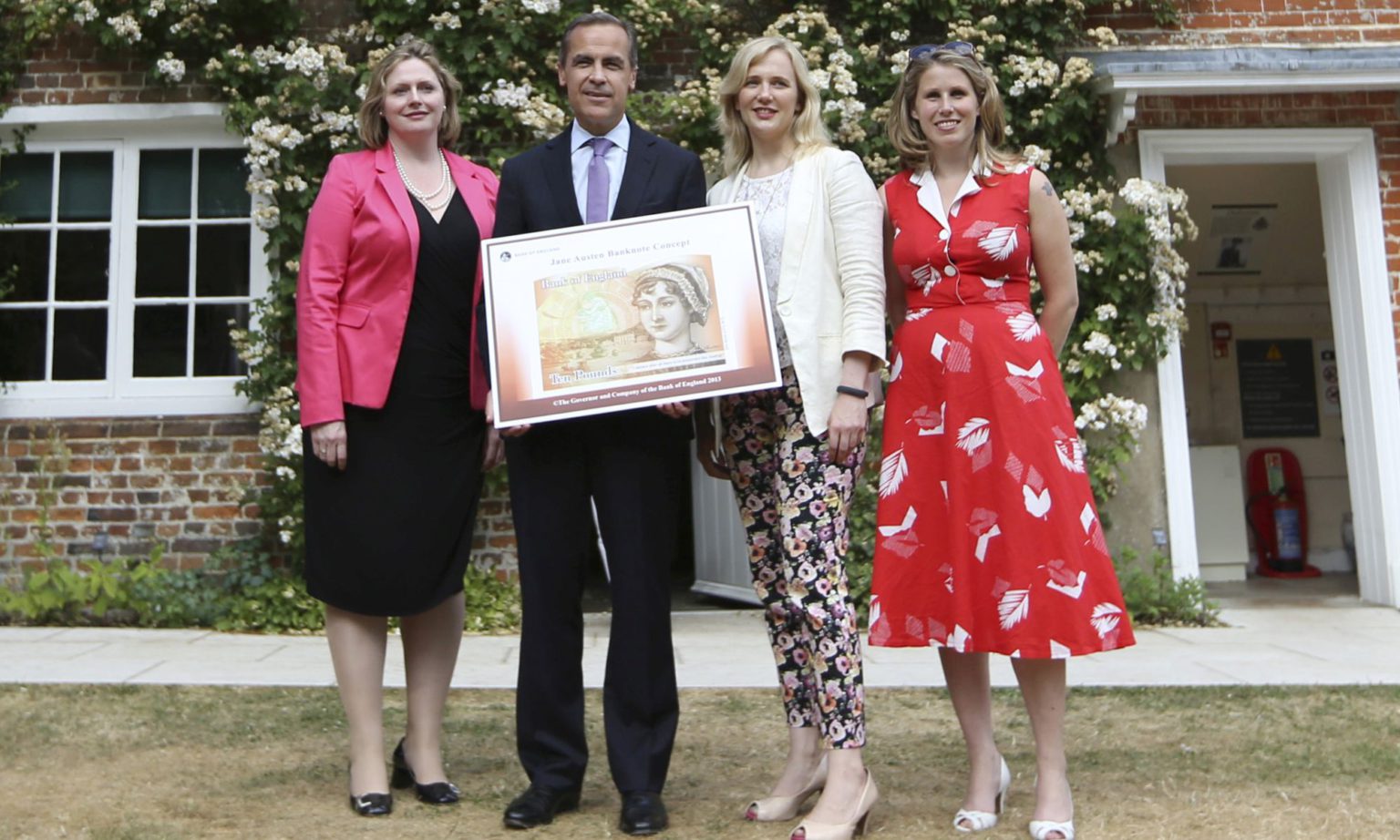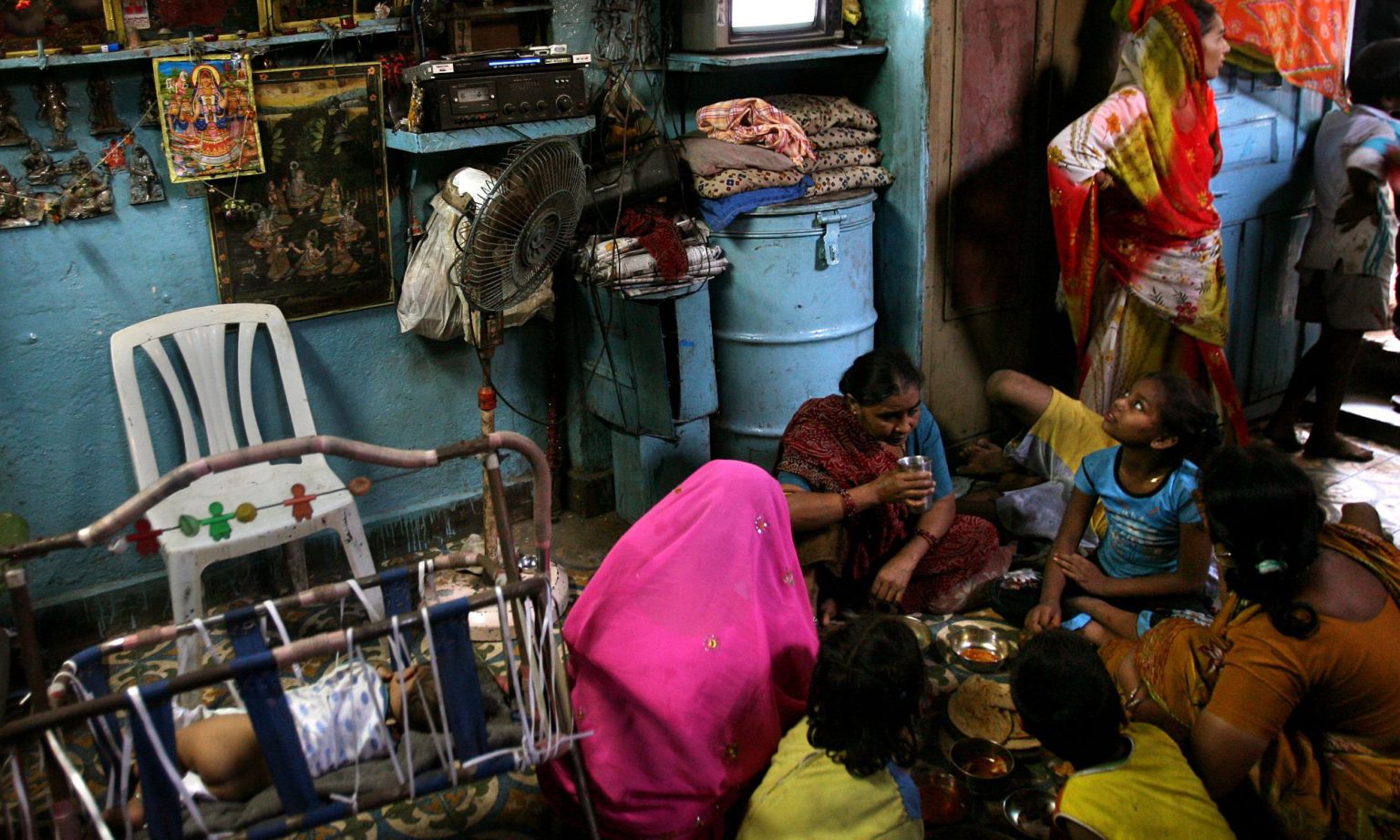
Long-read
Down with feelgood feminist victimhood
Caroline Criado-Perez’s new book shamelessly appropriates the oppression of non-Western women to further the ends of a privileged feminist elite.
Want to read spiked ad-free? Become a spiked supporter.
You have to admire Caroline Criado-Perez. She may have had the best education money can buy. She may live in a society falling over itself to provide opportunities for well-bred, well-educated women, such as all-women parliamentary shortlists or women-only scholarships. Yet none of this deters the brave campaigner against sexist bank notes and statues in her efforts to prove that women are still oppressed.
Life is tough for professional feminists. You have to go on television and explain how cartoons like Fireman Sam put three-year-old girls off entering the fire service. You have to make public the misery women endure from phones that are too big for ladies’ dainty hands and air conditioning set to a male body temperature. You might pick up a salary working for a pressure group like the Fawcett Society or UK Feminista, but, like Everyday Sexism’s Laura Bates, you still have to travel the country to speak in school assemblies. And, like Criado-Perez, you have to promote your latest book.
In her widely reviewed Invisible Women, Criado-Perez draws upon a vast array of statistics and data to show the extent of gender inequality today. Remarkably, she also highlights the absence of statistics and data, the supposed invisibility of women, to make the exact same point. Criado-Perez is clearly not an invisible woman and what her book really demonstrates is how a small group of highly privileged women are able to convince themselves and others that they are victims of a man-made, male-dominated world.
Feminism as identity politics
Once, the label of identity politics was scornfully applied to ideas and viewpoints that were considered distinct from ‘real’ politics. In contrast to competing visions of society battling it out, with the interests of capital on one side and workers on the other, identity politics, with its focus on ethnicity, gender and sexuality, was seen as divisive and limited. But Criado-Perez is part of a new breed of activists who own their identity politics. ‘The truth is that white and male is just as much an identity as black and female’, she writes. According to Criado-Perez, expressions of universalism are just a cover for furthering the interests of white men.

Dividing the world according to gender – as professional feminists ask us to do – makes room for the supposedly quite distinct interests of women. When gender is the key divide, social class becomes meaningless. The coalmining industry, Criado-Perez tells us, ‘provides 53,420 jobs in total, at a median annual wage of $59,380. Compare this to the majority female 924,640-strong cleaning and housekeeper workforce, whose median annual income is $21,820.’ Leaving her to ask: ‘So who’s the real working class?’ Ignore the fact that we are hardly comparing like with like in terms of skills, risks or hours worked – the key point is that identity politics is asking us to pick. We can’t answer: both are part of the working class.
This identitarian outlook replaces social class with the idea that women, collectively, experience the world in the same way and share interests in common. There was undoubtedly some truth to this in the past. When legal restrictions or informal conventions prevented women from working in all but a few professions, initiating divorce, getting an education, voting in elections, or taking control of their own fertility, then there was a basis for claiming that women, as a whole, were oppressed. Drawing upon examples from the slums of Bangladesh to the favelas of Brazil, Criado-Perez shows how this experience of female oppression exists in some societies to this day.
Not all women
But what may have once been true is, in wealthy, Western countries, simply not true today. The legal restrictions that meant women were treated differently to men have been overturned. As a result, women are no longer oppressed and this has allowed a group of socially elite, highly educated, professional women to lead very different lives to the majority of women. Writing in The XX Factor, Alison Wolf demarcates a top ‘15 or 20 per cent of a developed country’s female workforce’, and argues that the jobs they do, the money they earn and the lifestyles they choose mean they have far more in common with men in a similar position than other women.
The idea that women – all women, whether in wealthy Western societies or less developed countries – form a gendered class allows feminists, who are part of this new privileged elite, to insist they are still oppressed. ‘The global gender pay gap currently stands at 37.8 per cent’, Criado-Perez tells us, and ‘globally, women do three times the amount of unpaid care work men do’. The all-encompassing nature of these statistics makes them utterly meaningless – the London businesswoman who employs a nanny and cleaner earns more and does less unpaid care work than most women and most men.
In Invisible Women, Criado-Perez moves seamlessly around the world, highlighting the experiences of women and girls in wildly different circumstances, to fuel her argument that women are overlooked and disadvantaged. This global reach makes for an interesting and incredibly thorough book. But shifting between Brazil’s favelas, the Barbican in London, a township in South Africa and the career struggles of female academics, in order to present a unifying experience of abuse and exploitation, is grossly misleading. It allows elite women to appropriate the oppression experienced by others in order to further their own interests. If Criado-Perez was to don a sari, her politically correct friends would no doubt call her out for cultural appropriation. Yet oppression appropriation – pretending that the struggles faced by teenage girls in Mumbai slums demonstrate the suffering of all women – is, apparently, perfectly acceptable.
The idea that all women, whether in wealthy Western societies or less developed countries, form a gendered class, allows socially privileged feminists to insist they are still oppressed
Worse still, Criado-Perez appropriates oppression for her own ends, yet cannot bring herself to condemn outright sexist cultures. It is shocking that more women than men die from natural disasters in societies, like Bangladesh, where it is forbidden for them to leave home without a male escort and head to a mixed-sex communal shelter, say, after a flood – yet rather than criticising this backward cultural practice, Criado-Perez accommodates it by arguing for the provision of single-sex facilities, in this case, single-sex shelters.
Alternative facts
Criado-Perez presents her use of statistics and data as an objective analysis, a straightforward presentation of facts. Even more than this, she suggests that, by exposing gaps in our knowledge, she is able to go further and challenge our existing understanding of reality: ‘These facts have been lying to us. They have all been distorted by a failure to account for half of humanity.’ But Criado-Perez has her own data gaps. We are told that, at school, young children learn a ‘brilliance bias’: that males can be brilliant or a genius or ‘super smart’, but females cannot. Yet there is little attempt to explain how this happens, given that the overwhelming majority of primary-school teachers are women and, from the earliest years in school, girls actually outperform boys. Similarly, we are told that ‘by the time they’re filling out university evaluation forms, students are primed to see their female teachers as less qualified’. But we are not told that female students outnumber their male counterparts, and have done for well over a quarter of a century. The mass entry of women into the professions – becoming doctors, lawyers, accountants and vets – is also overlooked.
Criado-Perez rails against data that is not broken down according to gender. But cutting datasets according to gender, and then ignoring inconvenient facts about women who are doing really well, creates its own gaps. For example, data that was once broken down according to social class is now far more likely to be cut across lines of gender and ethnicity. In the 1960s statistics about exam results and educational outcomes were correlated with social class. By the mid-1980s this had shifted to gender. Performance differentials according to class had not disappeared any more than gendered differences had just emerged – the data was simply being used to tell a very different story.
The default male
In Invisible Women, Criado-Perez argues that data gaps exist because the default human is assumed to be male. Everything, from the hours we work to the location of public-transport infrastructure, from the provision of healthcare services to the very language we use, has been made by men, for men and to the advantage of men. If we ignore the fact that very few men actually match up to the ‘default’ – white, heterosexual, middle-aged, middle class, 176 centimetres tall and weighing in at 84 kilogrammes – she has a point.
The all-encompassing nature of these statistics makes them meaningless – the London businesswoman who employs a nanny and cleaner earns more and does less unpaid care work than most women and most men
In historical context, women’s entry into the workplace and public life is still relatively new and some parts of the world clearly still have a long way to go. Much infrastructure and many working practices were established at a time when women were expected to play a role more closely tied to home and family. For single-parent households, or in families where both parents work full-time, the expectation that people work long hours, perhaps with a lengthy commute, comes into conflict with the need and desire to spend time at home caring for children or elderly relatives. Being expected to supervise homework, or meet medical or school appointments during the working day, only adds to the pressure. But as more women enter the workplace these things are, very slowly, beginning to change.
However, women can only argue for these changes if they recognise themselves as agents, able to shape the society they live in. Criado-Perez does not seem to see it this way. The default male is present in language, she insists. ‘Countries with gender-inflected languages, which have strong ideas of masculine and feminine present in almost every utterance, are the most unequal in terms of gender’, she tells us. This is a bizarre claim. By any account, it is surely better to be a woman in France – even with its gendered language – than it is in Rwanda. Criado-Perez assumes language constructs our perceptions of reality, but the opposite is true. We no longer refer to ‘doctoresses’ because there is nothing unusual about a female doctor. In fact, go to see your GP and it is far more likely you will see a woman than a man.
Real problems
Invisible Women is a frustrating read. Every problem seems ultimately to come down to death. Women die in car accidents; because of the chemicals they use in nail salons and in cleaning; because medical problems go undiagnosed; because they are left abandoned following natural disasters. This tale of woe, this desperate search for oppression, becomes a barrier to change and to thinking big and making the world a better place for women and men.
There are certainly real problems in the world and no doubt some hit women, especially women in developing countries, harder than men. There are changes that could make life better for everyone today. We might integrate schools, nurseries, workplaces and residential areas more closely with faster public transport to cut commuting times. Working fewer but better-paid hours each week could give men and women more freedom to pursue their own goals as well as caring for children, relatives and neighbours. However, the starting point needs to be recognition that women and men today live, work and raise children alongside each other, in families and communities, not in opposition to each other.

Criado-Perez assumes that not just cultural practices but poverty are fixed for all time and that it is better to organise women’s lives around their present circumstances than to change their circumstances entirely. Western women’s lives have benefited from economic development; they have been transformed by cars, supermarkets, washing machines, fridges and ready meals as much as by the birth-control pill and the equal-pay act.
There’s scope to go further and we could start by bringing this development to women around the world. But Criado-Perez does not demand air conditioning, hot and cold running water and dishwashers for women in Mumbai slums. Instead she wants them to use their existing ‘three stone stoves’, just with an added bit of scrap metal to direct the smoke. This does of course raise the question: if women as a whole are a class with interests in common, would Criado-Perez be happy to cook on a three stone stove – even one with an added scrap metal ‘instrument’?
The lumping together of all women as a class elides differences between the experiences of women in wildly different circumstances. It allows expensively educated women, like Criado-Perez, to exploit the hardship and oppression of some women in order to further their own agenda. When a campaigner’s income, status and sense of self are tied up with the disadvantages experienced by others, then there is little incentive to see these problems disappear. Arguing for a ban on Fireman Sam or complaining about the size of mobile phones might help professional feminists sell a few more books; but it does nothing to improve the lives of women – and men – who are not part of this privileged elite.
Joanna Williams is speaking about feminism and free speech at the How the Light Gets In Festival, in Hay on 24-27 May.
Invisible Women: Exposing Data Bias in a World Designed for Men, by Caroline Criado Perez, is published by Chatto and Windus. (Buy this book from Amazon(UK).)
Pictures by: Getty Images.
Who funds spiked? You do
We are funded by you. And in this era of cancel culture and advertiser boycotts, we rely on your donations more than ever. Seventy per cent of our revenue comes from our readers’ donations – the vast majority giving just £5 per month. If you make a regular donation – of £5 a month or £50 a year – you can become a and enjoy:
–Ad-free reading
–Exclusive events
–Access to our comments section
It’s the best way to keep spiked going – and growing. Thank you!







Comments
Want to join the conversation?
Only spiked supporters and patrons, who donate regularly to us, can comment on our articles.